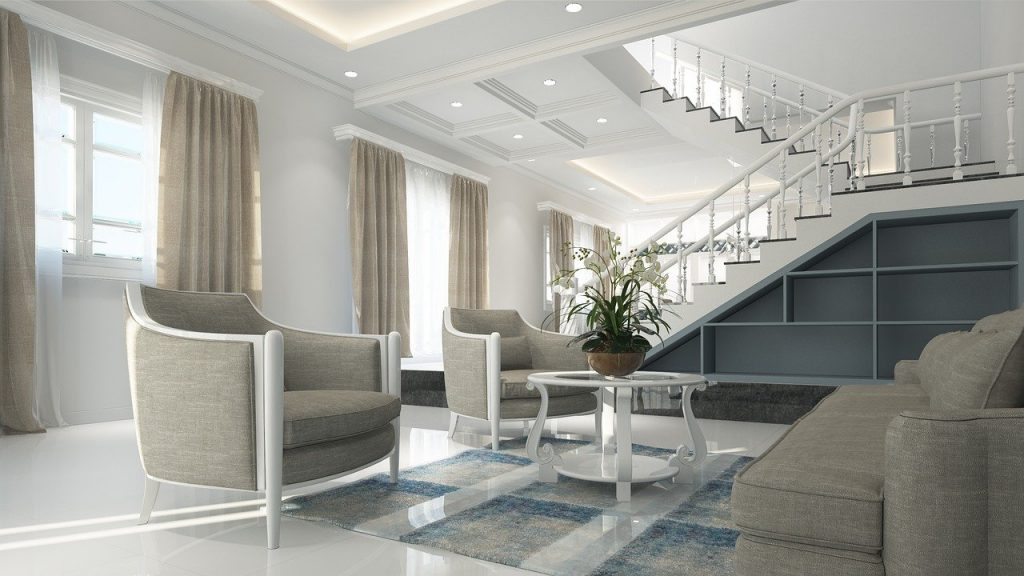Not all of us are lucky to have huge spacious homes. But sadly, most of us have been riddled with architectural and interior design traditions that are more appropriate for large spaces.
We overlook these space-hogging features mostly because we are used to seeing them everywhere. Go over your home and see how many of these you could check. If you got at least half of them, maybe it’s time to get a home makeover.
Swinging doors
The most traditional doors are those that you swing open. Doors don’t take space, you think. But then, the space taken up where you swing open your door becomes useless. You don’t feel it in large rooms. But the smaller the room gets, the more impractical these swinging doors are.
So how do you solve this problem? See if an open archway works. If you really need to put a door between the two spaces, then the easiest solution is to install sliding doors. Better yet, as it is becoming a fancy trend nowadays, sliding shelves. It then ends up feeling like a concealed doorway.

But you think the wall could have been the best place to display your framed Lori Holt fabric collection or your framed vintage newspapers. For sure, your home has several walls. Find one that does not have a door on it.
Space under the stairs
For the longest time, the space under the stairs had been lost to dust and assorted knickknacks. In some homes, they turned this into something slightly useful, the broom closet. But thanks to the pragmatic small home lifestyles, people added shelves and drawers under the stairs aesthetically. Large sweeping staircases that don’t have anything underneath are nice to look at, but they are best suited to homes with plenty of space to spare.
The entryway
The entryway is one of the most neglected parts of the house. It’s like an open storage area for umbrellas, shoes, bags, and now disinfecting items. It’s not good that the moment you enter your house, you meet clutter.
It’s very simple to clear your entryway. Put a storage closet where you could dump all of your things in. Don’t think it’s inconvenient you have to open closet doors and drawers to take your shoes or umbrella out. The effort is worth it; your entryway now free of assorted things hanging or lying all over.
Your garage
Another underused room is the garage. It’s been treated as a parking space for your car and the storage area for everything that’s broken, and you never get the time to have it fixed.
While people who want to show off their luxury cars have them parked in their living rooms, it is not good for your health. After all, every time you start it up, and just before you turn it off when parking, it releases carbon monoxide. Unless your living room is a showroom for cars that would never be used, please have a separate garage.
Your garage doesn’t have to be a messy storage space, though. While it’s not a space to have your morning coffee, make the most of it. Install proper closets for your stored items. Or at least have hooks on your walls where you could hang your garden house, ropes, shovels, and not leave them stacked in one place.
Wide shelves
Shelves are great space management tools. However, if not planned well, you could underutilize your room. Instead of having wide shelves that would take up space horizontally, pile it up to your ceiling. The space between the top of your shelf and the ceiling is often huge, and it’s just vacant. Add a movable ladder so you could reach the top. Tall shelves also give the illusion of larger space because they draw the eyes up instead of the sides.
Floor lamps
Despite having various kinds of wall and hanging lamps, people have been fixated with floor lamps. You might think that the floor lamp you got has a thin body anyway, so it doesn’t take up much space. But the actual space it’s occupying is the circumference of its base and shade. When moving around it, you’re not just avoiding the body. When you think about space, don’t just think about what the eyes would perceive but the actual area you could move freely in.
The best way to have more space would, of course, be to have only a few things. But minimalism is not for everyone. So be conscious of how you’re using your limited space. Don’t just look at the floor. Look at your walls, ceiling, and every surface you could maximize.



